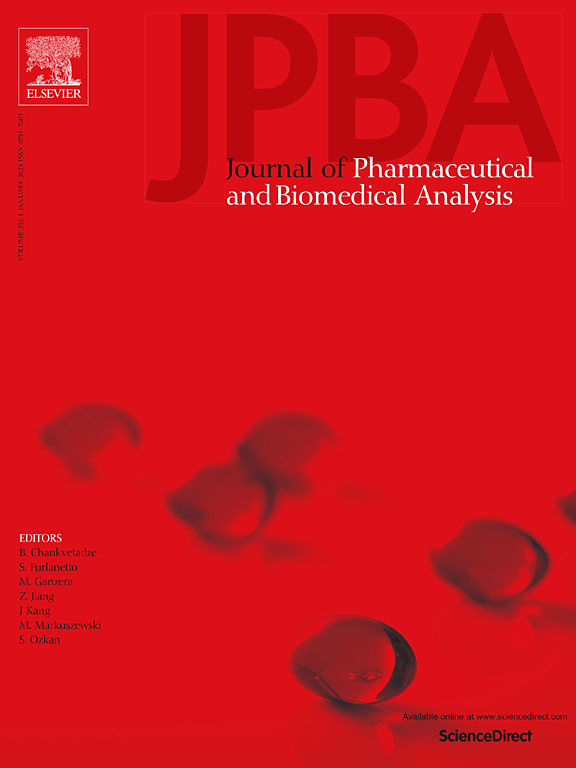Inter-individual variability in the metabolism of psychotropic drugs by the enzyme activities from the human gut microbiome
IF 3.1
3区 医学
Q2 CHEMISTRY, ANALYTICAL
Journal of pharmaceutical and biomedical analysis
Pub Date : 2025-02-01
DOI:10.1016/j.jpba.2025.116717
引用次数: 0
Abstract
The interaction between marketed drugs and the gut microbiome is increasingly being recognized, and it is now known that enzymes produced by the bacteria in the human gut can degrade psychotropic drugs. However, the degree of inter-individual variation in their metabolism remains largely unknown. Here, we present a simple model for detecting individual drug-microbiome interaction using fecalase. We incubated fecalase prepared from freshly collected stool samples from healthy volunteers (n = 18) and incubated with nine selected psychotropic medications. We proved fecalase retained enzymatic activities and showed the degree of drug degradation differed significantly for different psychotropic drugs, and there was significant inter-individual variation in the metabolism of phenytoin, amitriptyline, and chlorpromazine with the inter-individual point difference between the strongest and weakest metabolizer of 85 %, 39 %, and 30 % respectively. These findings highlight the potential of fecalase as a model for studying personalized drug metabolism and underscore the importance of considering gut microbiome variability in pharmacological research.
求助全文
约1分钟内获得全文
求助全文
来源期刊
CiteScore
6.70
自引率
5.90%
发文量
588
审稿时长
37 days
期刊介绍:
This journal is an international medium directed towards the needs of academic, clinical, government and industrial analysis by publishing original research reports and critical reviews on pharmaceutical and biomedical analysis. It covers the interdisciplinary aspects of analysis in the pharmaceutical, biomedical and clinical sciences, including developments in analytical methodology, instrumentation, computation and interpretation. Submissions on novel applications focusing on drug purity and stability studies, pharmacokinetics, therapeutic monitoring, metabolic profiling; drug-related aspects of analytical biochemistry and forensic toxicology; quality assurance in the pharmaceutical industry are also welcome.
Studies from areas of well established and poorly selective methods, such as UV-VIS spectrophotometry (including derivative and multi-wavelength measurements), basic electroanalytical (potentiometric, polarographic and voltammetric) methods, fluorimetry, flow-injection analysis, etc. are accepted for publication in exceptional cases only, if a unique and substantial advantage over presently known systems is demonstrated. The same applies to the assay of simple drug formulations by any kind of methods and the determination of drugs in biological samples based merely on spiked samples. Drug purity/stability studies should contain information on the structure elucidation of the impurities/degradants.

 求助内容:
求助内容: 应助结果提醒方式:
应助结果提醒方式:


